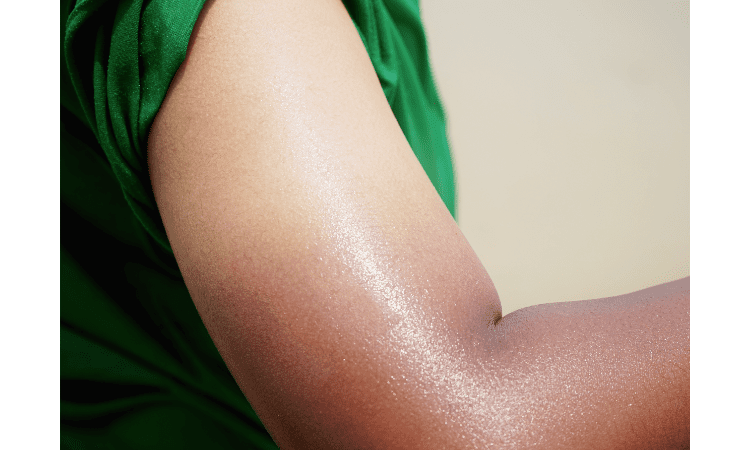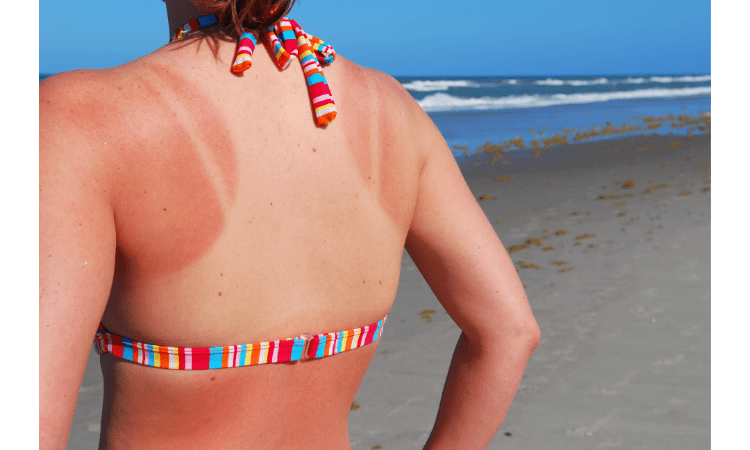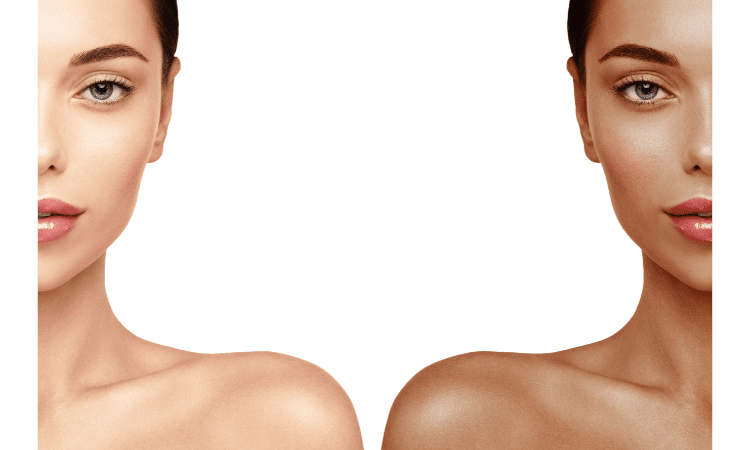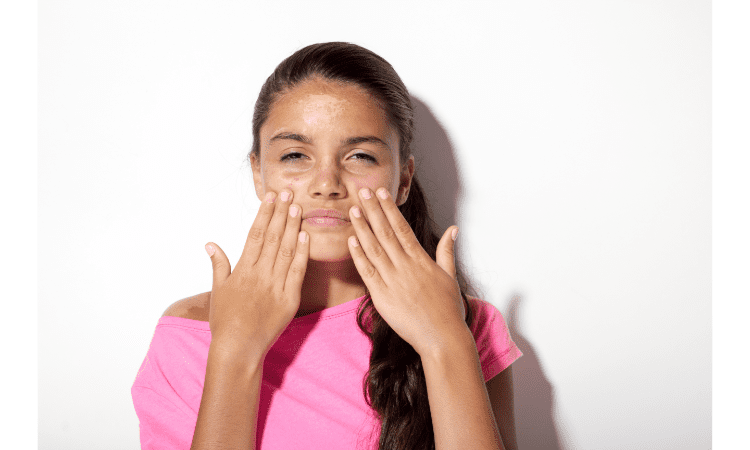
Everyone loves relaxing on a sandy beach, hiking a scenic trail, or soaking up the sun during their lunch break. However, enjoying the sun safely requires more than just avoiding sunburns. The ultraviolet (UV) rays from the sun are a type of radiation that can damage your skin and eyes permanently. Too much exposure to UV rays can cause eye problems like cataracts as well as skin cancer—the most common form of cancer in the United States. Skin cancer is highly preventable by using these six tips for protecting your skin and eyes from UV rays:
Sunburns can happen when you least expect it.

You might think you’re in the clear once you’ve been out and about for a couple of hours, but sunburns can happen when you least expect it. Even if the sky is cloudy and it doesn’t look like there’s much sun around, ultraviolet rays are still present. It’s important to apply sunscreen every two hours if you’re outside, even on cloudy days. If you’re swimming or sweating heavily while being exposed to UV light, it’s essential that you reapply sunscreen every hour.
Wear the right sunscreen. Reapply sunscreen every two hours, especially if you are swimming or sweating.

- Choose a sunscreen that is SPF 30 or higher.
- Look for a broad-spectrum sunscreen. This means it protects against both UVA and UVB rays (UVA rays cause premature aging, while UVB rays cause sunburn).
- Look for a sunscreen with zinc oxide or titanium dioxide in it. These ingredients provide excellent protection from both UVA and UVB rays, are considered safe by the FDA, and can be found in all of our recommended sunscreens.
- Find out if your choice has been tested by an independent laboratory. If you plan to wear an SPF 50 formula, look for one that has been tested at least once by an independent laboratory to meet its stated level of protection.
Cover Up.
When you’re outside, wear long sleeves and long pants. This will help protect your skin from the sun’s harmful rays. If you don’t have sunscreen on, it’s best to stay covered up!

You can also accessorize with a hat that shades your face or use a pair of sunglasses. You may want to consider getting prescription sunglasses because they protect your eyes better than non-prescription ones. Another way to keep your eyes safe is to wear a hat when you’re outdoors, especially if you’re playing sports or working outside in the sun.
Also, remember to apply sunscreen before you leave the house. Sunscreen should be applied 30 minutes before going outside and reapplied every two hours, even if it’s just for 20 minutes.
Use sunscreen every day, even if it’s cloudy.

Sunscreen protects against both UVA and UVB rays. Both types of radiation have been linked to skin damage, including sunburn and premature aging. It’s important to know that even if the sky is gray or cloudy, you can still get a sunburn from UV rays reflected off water or sand.
UVB rays cause your skin to burn and are more intense during the summer months, especially between 10 a.m. and 4 p.m., so it’s important to use sunscreen year-round—and reapply every two hours if you’ll be outside for an extended period of time—regardless of where you live!
Accessorize with a hat that shades your face

If you want to accessorize with your own personal sun hat, the UV Protection Lab recommends you choose one that shades your face. This will ensure that the sun’s rays can’t reach your delicate eyes, which can become inflamed and cause vision problems if they are exposed to too much light.
Additionally, a hat should shade other parts of your body as well. Hats that shade ears, necks and shoulders may also be beneficial in preventing skin cancer due to overexposure, so it is important to look for these when choosing a new hat or finding ways to improve an old one. For example:
- Wear a straw cowboy hat with wide brim when going out on horseback rides in Arizona during summertime
- Wear a baseball cap at night while sleeping outdoors
Use a pair of sunglasses

You also need to be sure that you are wearing sunglasses that block UV rays. You can check the label or look for a pair with an “UV 400” rating on it, which means they block 99% of UVA and UVB rays. Sunglasses that fit your face properly will help prevent squinting, which could lead to wrinkles around your eyes. It’s important not to wear sunglasses that are too large or small for your features, though—you want them to be large enough so they don’t slip down over time but small enough so they aren’t constantly sliding down into your face while you’re walking around town. Also avoid wearing dark-colored lenses if possible; this will allow more light through than necessary and reduce contrast when it comes time for reading text on a computer screen later in the day (or night).
Myths about Sun Protection
Contrary to popular belief, the sun is always a threat. Even on cold or cloudy days, you are still susceptible to damage from the sun’s rays. It is important to be diligent about your skin care and take the necessary steps to protect yourself. Not only will proper preventative measures help you avoid painful sunburns, but they will also reduce your risk of developing skin cancer. Here are some common myths and misunderstandings about sun protection debunked:
You can’t get sunburnt on cloudy or cool days

The sun is always a threat, even on cloudy or cool days. UV rays can penetrate cloud cover, water, and glass. Research shows that more than 80% of UV rays penetrate the clouds on a typical summer day in Canada. The sun’s rays are strongest between 10am and 4pm, so protect yourself at all times if you want to avoid sunburn!
A tan that builds up over summer isn’t dangerous

The sun is harmful all year round, even when it’s cloudy. The truth is that the sun’s rays can damage your skin whether it’s sunny and hot or cloudy and cool. On a cool day, you might think you’re safe from UV damage because of the cooler air temperature, but this isn’t always true. Clouds filter out some of the ultra-violet (UV) rays from the sun but not all of them—and even what gets through can still cause harm to your skin if you don’t protect yourself with sunscreen or other forms of protection.
The same goes for rainy days: while rain might block some UV rays from reaching your skin directly, water absorbs more UV light than dry land does! So when it rains heavily, there are more opportunities for this absorbed UV energy to be transferred into your body and cause harm than on dry days when sunlight reflects off water rather than striking directly at its surface as would happen otherwise with no clouds present overhead during normal rainfall levels (or light misting).
I don’t need sunscreen because there’s SPF in my cosmetics

Avoiding sunburn is important, but it’s also a good idea to protect your skin from the aging effects of UV exposure. That’s why many people prefer to use sunscreen, despite some misconceptions about what it is and how it works.
Sunscreen provides protection against both UVA and UVB rays—the main difference between them is their wavelength: UVB (280–320 nanometers) is closer to visible light than UVA (320–400 nm), which makes up as much of 80% of total solar radiation reaching earth. Both types can cause damage at these wavelengths or shorter ones; however, UVA rays are more readily absorbed by the skin and penetrate deeper into our bodies where they can produce harmful effects like freckles, wrinkles and sagging skin.
can’t get sunburnt in the shade

You might think that because you’re in the shade, you’re safe from UV rays. However, even in the shade, UV rays can reach your skin. As a matter of fact, it may be harder for your body to detect the harmful effects of ultraviolet radiation when it comes through indirect sunlight compared with direct sunlight exposure. While sitting under a tree or on an overcast day is better than nothing at all, it still leaves room for improvement by using sunscreen and covering up as much as possible with clothing or hats (when appropriate).
I won’t get skin cancer because I tan

You may have noticed that your skin gets darker when you tan. You might even think this is a sign of less damage, but it isn’t. Sunlight causes DNA damage to your skin cells, which can lead to cell mutation and cancer. A tan doesn’t protect against skin cancer; in fact, a healthy tan is actually an indication of sunburned cells that have been damaged beyond repair.
I need to go out in the sun without protection for vitamin D

It’s true that your body needs vitamin D to function properly, but you don’t need to go out in the sun unprotected to get it. You can get vitamin D from food (fish, eggs, milk), supplements, and other sources. Vitamin D is produced in your skin when ultraviolet rays from sunlight hit it.
The American Academy of Dermatology recommends that people who are at high risk for skin cancer take a supplement containing 1,000 IUs of vitamin D daily. The academy also advises people with darker skin tones or a family history of melanoma to limit their exposure to ultraviolet radiation from the sun and wear protective clothing when outdoors during peak hours (10:00am – 4:00pm). It also recommends sunscreen use on all exposed areas every day.
the sun is always a threat

The sun is a powerful force, and its rays can cause some serious damage. It is the main cause of skin cancer, as well as other problems like eye irritation, premature aging, hair loss, and more.
The good news is that it’s easy to protect yourself from these harmful effects: just wear sunscreen! But with so many brands out there it can be hard to know which one is best for you. The truth is that not all sunscreens are created equal—some won’t offer enough protection for your needs or may even contain ingredients that could make your health worse than before.
Conclusion
To keep yourself safe from harmful UV rays, it’s essential to wear sunscreen every day. Reapplying often is important, especially if you’re spending several hours in the sun. SPF should be your go-to for UV protection and sunscreen should always be worn under your makeup. If you enjoy the outdoors often, sunglasses with UV protection can help prevent cataracts and other eye problems later in life. It’s also helpful to remember that shade is never guaranteed protection from UV rays and that tanning does not protect against skin cancer.
As we mentioned in the introduction, these tips are crucial to protecting yourself from sunburns and other damage caused by exposure to the sun’s rays. While there are many myths surrounding sunscreen use, remember that sunscreen is a vital part of any skincare routine. Sunscreen can help protect your skin from harmful UV rays while allowing you to enjoy the outdoors! By following our tips, you’ll be prepared for summer fun in no time at all.











